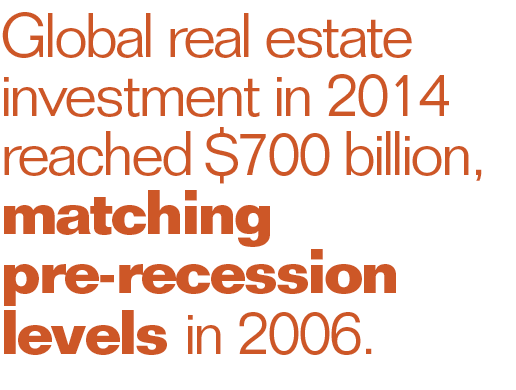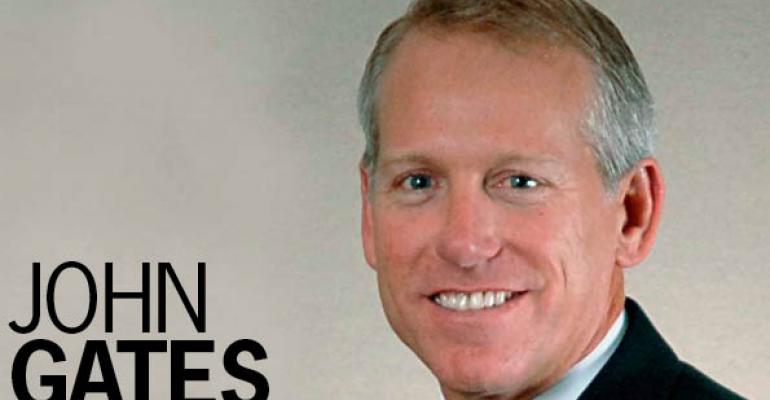As we assess market conditions across the globe today we can hold our heads high and thank last year’s momentum for this year’s potential. A positive foundation has been laid. Economic indicators look good, leasing is robust, new deliveries are set to be 25 percent above last year and prospects for even larger construction volumes are expected for 2016.
Global real estate investment in 2014 reached $700 billion, matching pre-recession levels in 2006. It is projected to increase by 5 percent to 10 percent this year alone. The word’s super cities hold the key. Thirty cities have received 50 percent of the $5 trillion direct commercial real estate investment in the past decade. This highlights tremendous investor confidence in the strength of super cities and the emergence of second-tier locations. Where are they? London, New York, Tokyo, Paris and Los Angeles top the list, followed closely by Boston, San Francisco, Chicago and Washington, D.C.
 All in all, just over half of the world’s super cities for real estate investment are located in the U.S., including some second-tier entrants such as Seattle, Miami and Denver. This is testament to our strong and diversified economy. The U.S. technology sector, for example, is driving commercial real estate demand. It is also, however, facing a war for talent and requires workplace flexibility that impacts real estate decisions.
All in all, just over half of the world’s super cities for real estate investment are located in the U.S., including some second-tier entrants such as Seattle, Miami and Denver. This is testament to our strong and diversified economy. The U.S. technology sector, for example, is driving commercial real estate demand. It is also, however, facing a war for talent and requires workplace flexibility that impacts real estate decisions.
The energy industry is another economic powerhouse, but with the recent oil price drop, energy-driven real estate markets such as Houston and Denver may face challenges this year.
Potential consolidation and mergers and acquisitions activity could be on the horizon. On the other hand, retail may see a boost with consumer confidence rising in the wake of lower gas prices at the pump.
Although here in the U.S. we have started on a good footing, elsewhere there are some red flags that could have a knock-on effect for real estate investment. Japan is in recession, the election in Greece has caught the Euro off guard and the escalating crisis in the Ukraine could further destabilize the overall regional economy. Ongoing geopolitical threats from terror groups could also destabilize our outlook, but for now, the U.S. real estate investment outlook is positive.
Despite some global economic uncertainty, there is an abundance of capital chasing commercial real estate product and the U.S. is marked a safe haven for foreign investors who need to diversify from their home markets.
A perfect example of this is evident in the bourgeoning industrial sector, where investors from Asia are leading the charge. This trend is underpinned by the pending $8 billion Blacktone sale of IndCor Properties Inc., which holds more than 110 million sq. ft. of U.S. warehouses and distribution centers, to Singapore’s sovereign wealth fund, GIC Pte.
While foreign investment in U.S. industrial real estate lags the office and retail sectors, volumes have grown five-fold in the last decade to $2.6 billion recorded last year. Canadian investment contributed to almost 50 percent of 2014 volumes; the closure of the GIC/IndCor deal, plus potential 2015 trades, will shift the momentum dramatically towards Asia.
This year we find ourselves in a short-term high spot, but must be mindful of potential corrections in the medium term.
John Gates is CEO, markets, Americas, for JLL, and is based in Dallas.

